Health Care > STUDY GUIDE > NR602 Pediatric Midterm Exam Study Guide/ Questions& Answers/ Guaranteed A+Guide (All)
NR602 Pediatric Midterm Exam Study Guide/ Questions& Answers/ Guaranteed A+Guide
Document Content and Description Below
The parent of a toddler is concerned that the child may have autism. The primary care pediatric nurse practitioner completes a Modified Checklist for Autism in Toddlers (M-CHAT) tool, which indicates ... several areas of concern. What will the nurse practitioner do? Administer a Childhood Autism Rating Scale (CARS) in the clinic. Consult a specialist to determine appropriate early intervention strategies. Refer the child to a behavioral specialist for further evaluation. Tell the parent that this result indicates that the child has autism. (- ANS: C The M-CHAT is a screening tool and is useful for detecting behaviors that may indicate autism. This instrument has been found to have acceptable sensitivity, specificity, and significant positive predictive value. If these behaviors are detected, the PNP should refer the child to a specialist for further assessment, using more diagnostic tools. The CARS may be used but requires specialty training and proper credentials. Until the diagnosis is determined, strategies for intervention are not discussed. The M-CHAT is a screening tool and is not diagnostic. The mother of a newborn tells the primary care pediatric nurse practitioner that she is worried that her child will develop allergies and asthma. Which tool will the nurse practitioner use to evaluate this risk? Three-generation pedigree Review of systems Genogram Ecomap (- ANS: A The three-generation pedigree is used to map out risks for genetic diseases in families, as well as conditions with modifiable risk factors. The review of systems is used to evaluate the history of the child's body systems. The genogram is an approach to developing a family database to provide a graphic representation of family structure, roles, and problems of recurring significance in a family. The ecomap is used to identify relationships in the family and community that are supportive or harmful. The primary care pediatric nurse practitioner is performing a well child check-up on a 20-month-old child. The child was 4 weeks premature and, according to a parent-completed developmental questionnaire, has achieved milestones for a 15-month-old infant. Which action is correct? Perform an in-depth developmental assessment screen at this visit to evaluate this child. Reassure the parent that the child will catch up to normal development by age 2 years. Re-evaluate this child's development and milestone achievements at the 2-year visit. Refer the child to a specialty clinic for evaluation and treatment of developmental delay. (- ANS: A This child should be at a 19-month adjusted age for prematurity so, according to the parent screen, is 4 months behind. The PNP should perform a more in-depth screen to evaluate this delay. Waiting to see if the child will "catch up" or assuring the parent that this will happen will cause the delays to become more severe. A referral to a specialty clinic should not be made solely on the basis of the parent-completed questionnaire but only after further evaluation of possible delays. When formulating developmental diagnoses for pediatric patients, the primary care pediatric nurse practitioner may use which resource? DC: 0-3R ICD-10-CM ICSD-3 NANDA International (- ANS: A The DC: 0-3R refers to the Diagnostic Classification of Mental Health and Developmental Disorders of Infancy and Early Childhood and is useful for developmental problem diagnosis. The ICD-10-CM is the International Classification of Diseases-Tenth Revision, Clinical Modification and is useful for identifying physiologic diseases. The ICSD-3 is the International Classification of Sleep Disorders - 3rd edition. NANDA International is used to label problems in the functional health domain. The primary care pediatric nurse practitioner is evaluating health literacy in the mother of a new preschool-age child. How will the nurse practitioner assess this? Ask the child how many books he has at home. Ask the mother about her highest grade in school. Ask the mother to determine the correct dose of a drug from a label. Ask the mother to read a health information handout aloud. (- ANS: A The "newest vital sign," or health literacy, can be determined quickly by asking the parent how many children's books are in the home. Greater than 10 books in the home is an independent positive predictor of adequate parent health literacy. The other questions may determine a specific level of literacy in general but are not as efficient. The primary care pediatric nurse practitioner learns that the mother of a 3-year-old child has been treated for depression for over 5 years. Which aspect of this child's development will be of the most concern to the nurse practitioner? Fine motor Gross motor Social/emotional Speech and language (- ANS: D Maternal depression in the first year of life has been associated with poorer language development at 3 years of age. The primary care pediatric nurse practitioner sees a 3-year-old child who chronically withholds stools, in spite of the parents' attempts to stop the behavior, requiring frequent treatments with laxative medications. Which diagnosis will the nurse practitioner use to facilitate third-party reimbursement? Altered elimination pattern Elimination disorder Encopresis Parenting alteration (- ANS: C Encopresis is a medical diagnosis, classified in the ICD-10-CM, and is recognized for reimbursement purposes. "Altered elimination pattern" and "Parenting alteration" are NANDA International diagnoses and are not recognized for reimbursement. "Elimination disorder" is a developmental diagnosis. A child is in the clinic for evaluation of an asthma action plan. The primary care pediatric nurse practitioner notes that the child's last visit was for a pre-kindergarten physical and observes that the child is extremely anxious. What will the nurse practitioner do initially? Ask the child's parent why the child is so anxious. Perform a physical assessment to rule out shortness of breath. Reassure the child that there is nothing to be afraid of. Review the purpose of this visit and any anticipated procedures. (- ANS: D The PNP should remember that young children are learning "scripts" for health care visits and may be stressed when recalling previous visits, especially if those involved immunizations. The PNP should explain the purpose and any anticipated procedures for this visit to help put the child at ease. [Show More]
Last updated: 1 year ago
Preview 1 out of 122 pages

Reviews( 0 )
Document information
Connected school, study & course
About the document
Uploaded On
Jun 29, 2022
Number of pages
122
Written in
Additional information
This document has been written for:
Uploaded
Jun 29, 2022
Downloads
0
Views
27


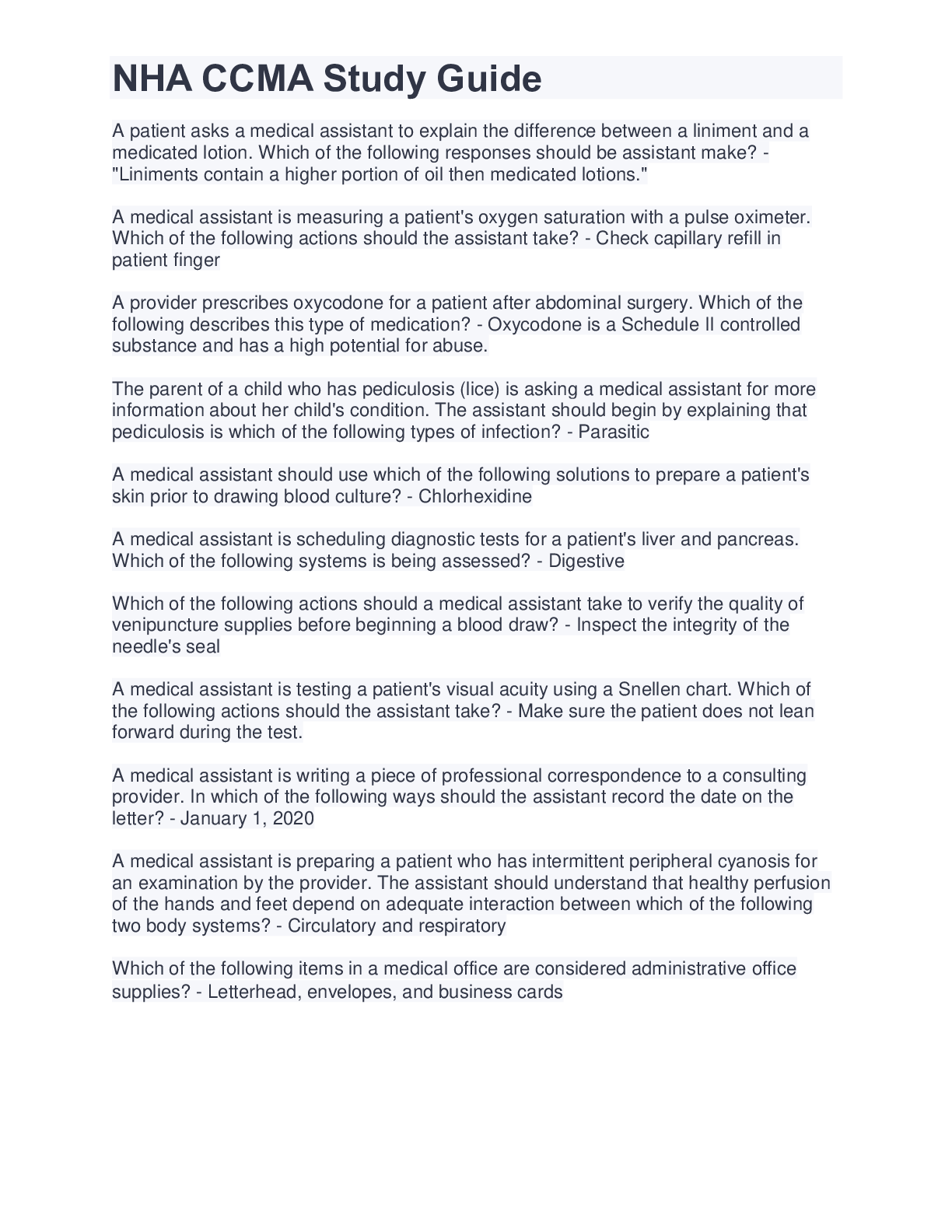

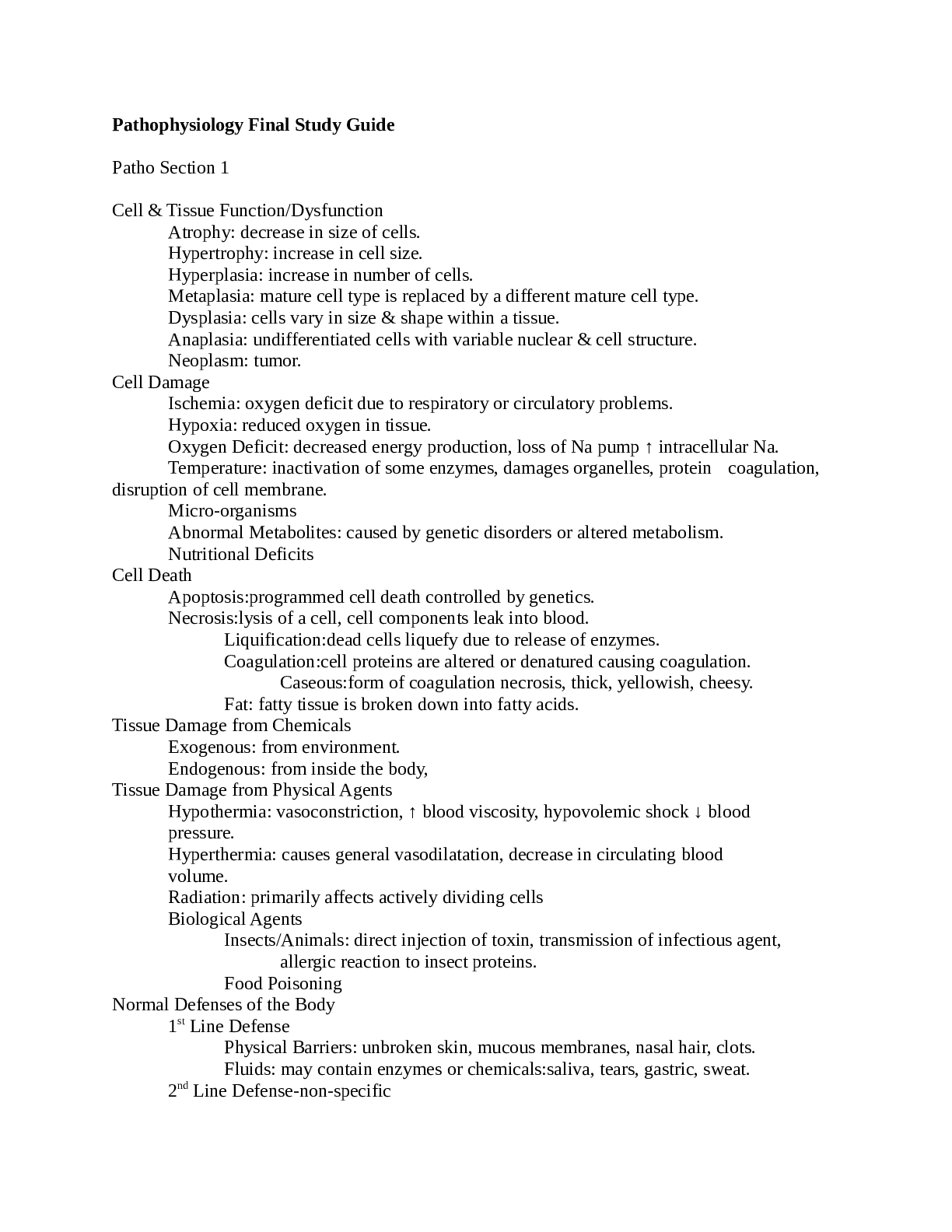

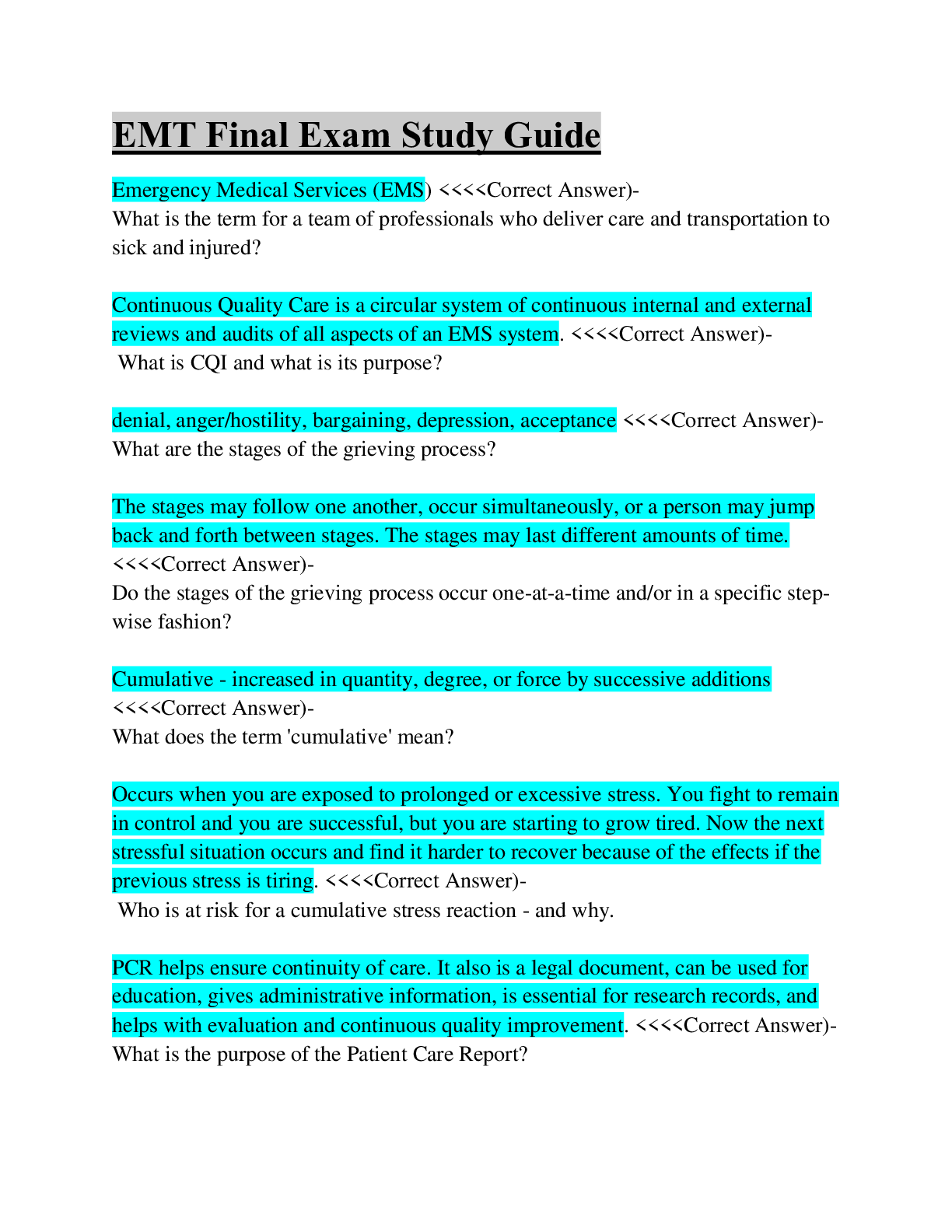
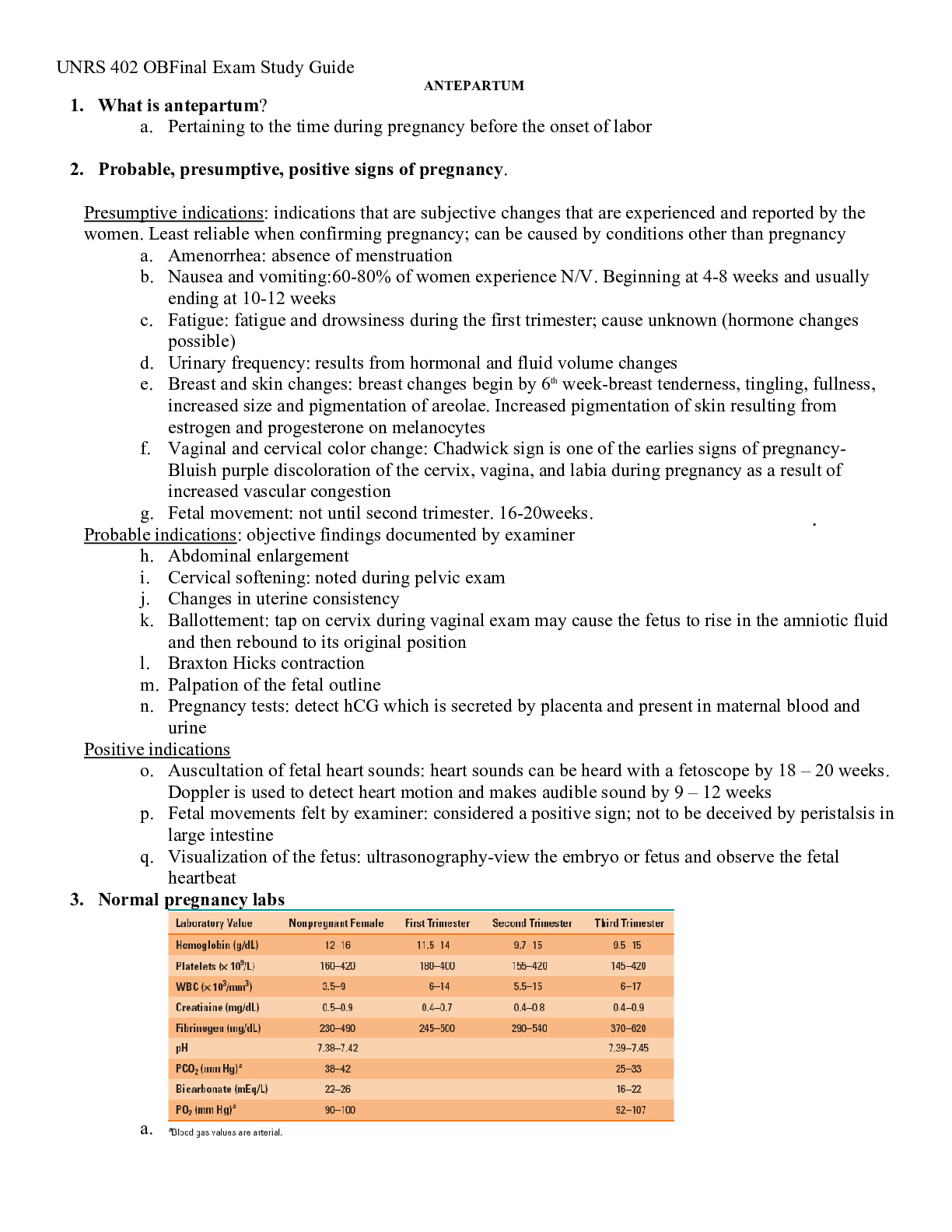
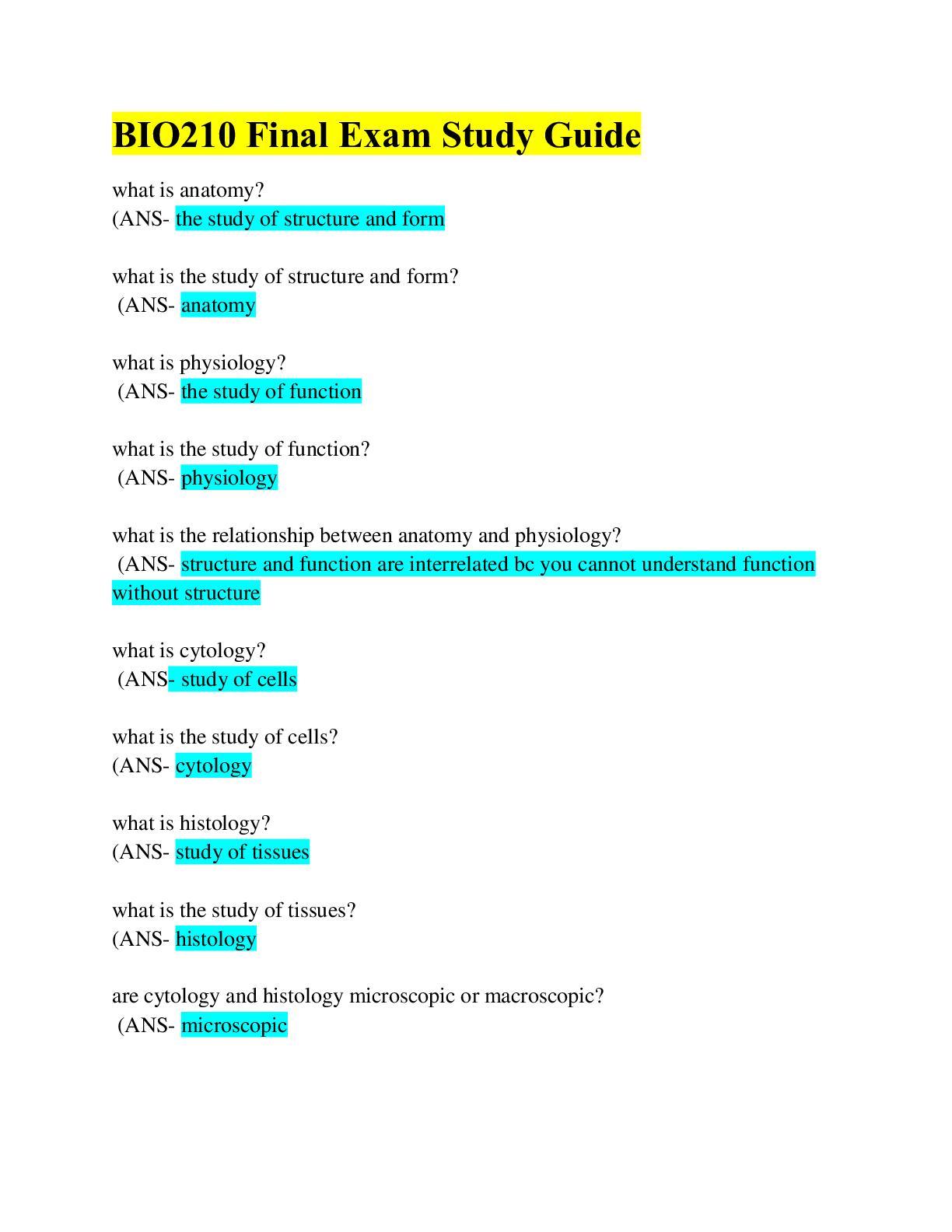
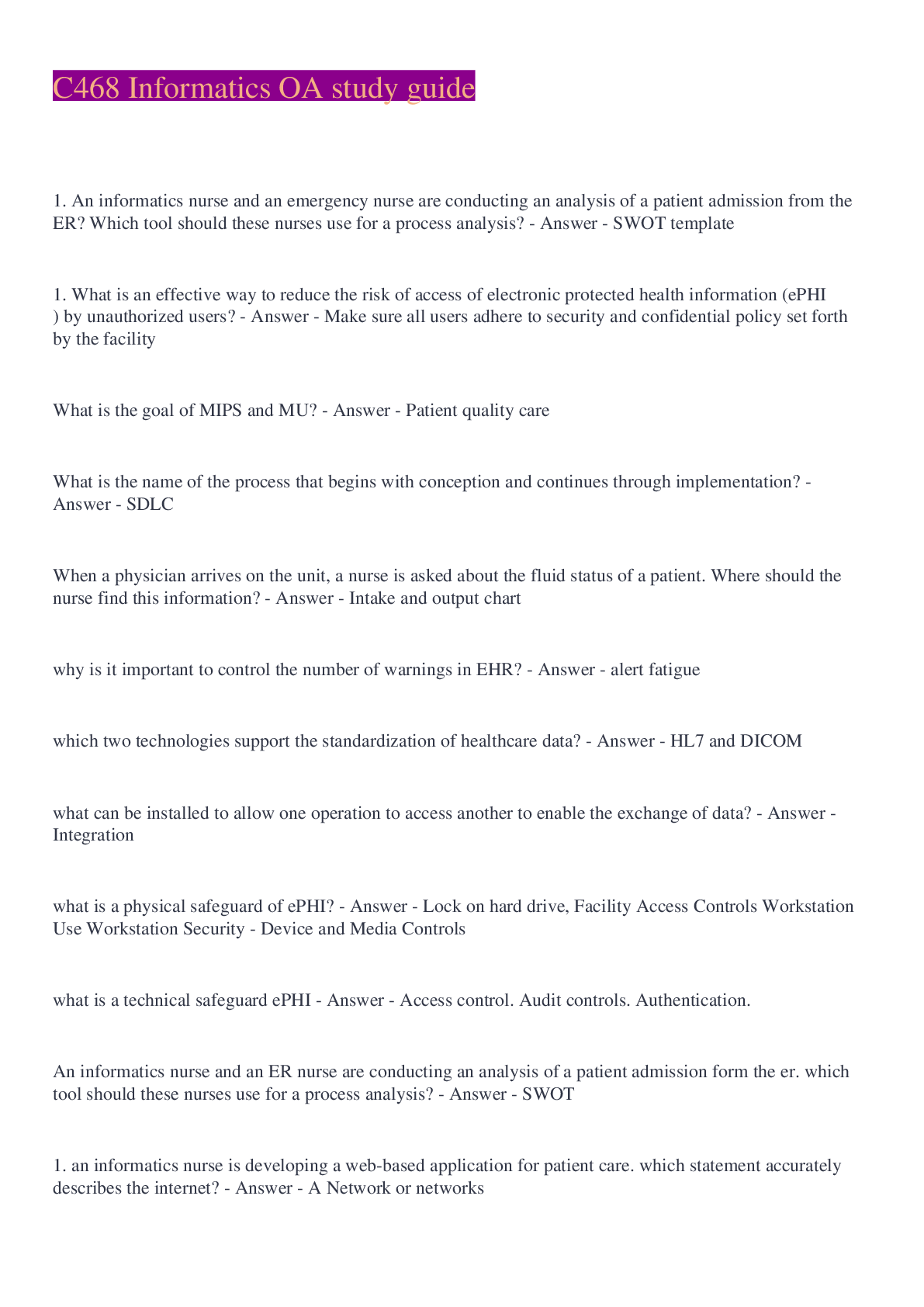



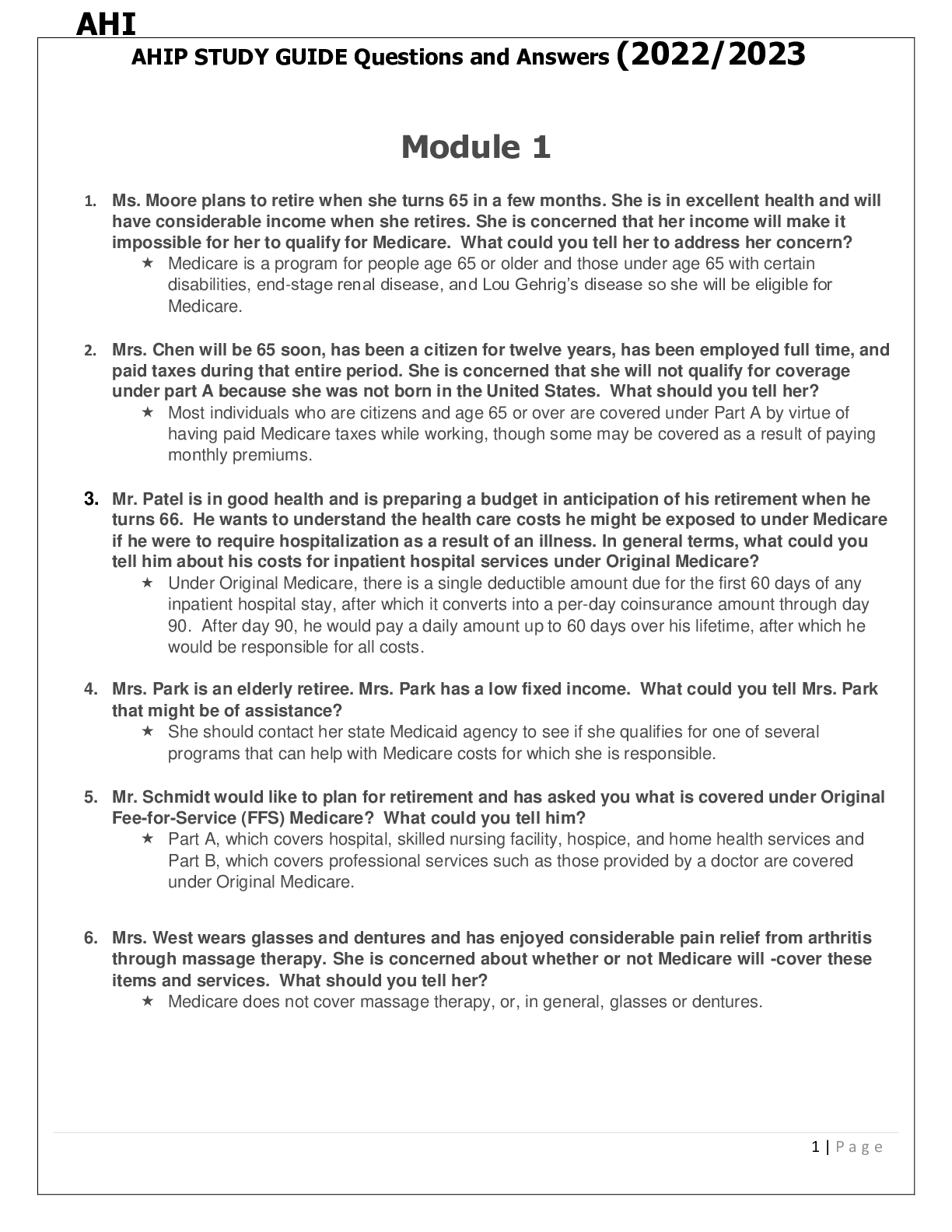
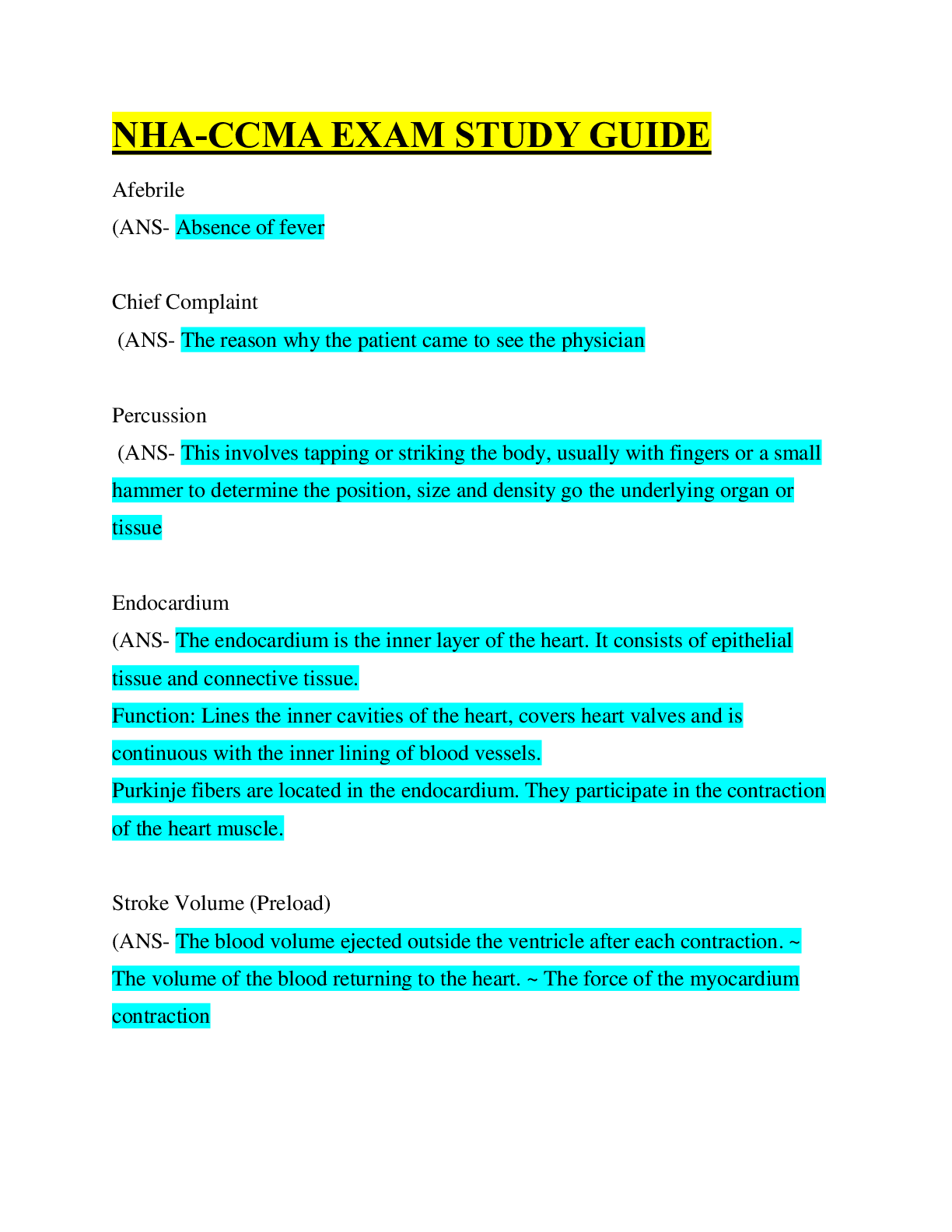
 Study Guide.png)
 Exam Study Guide.png)

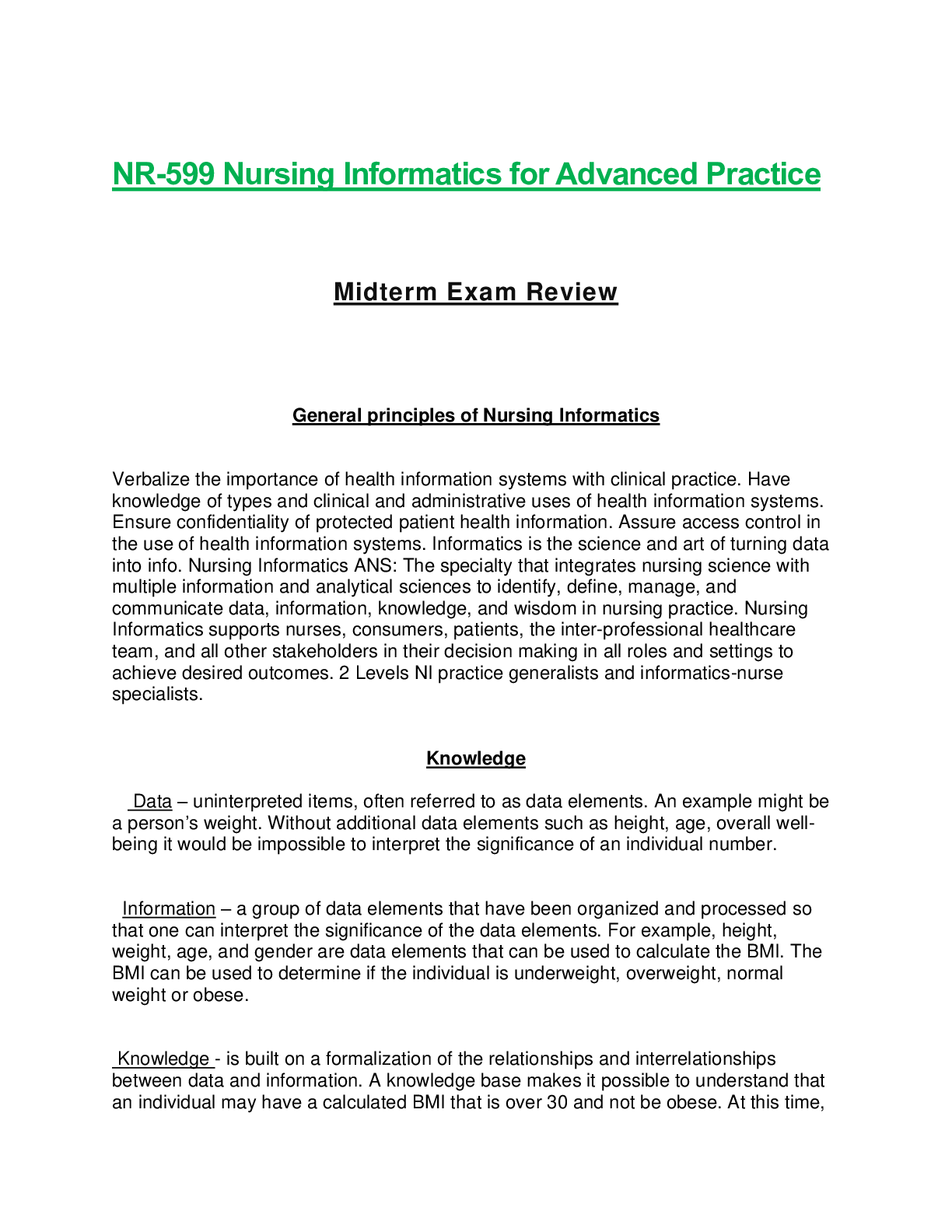
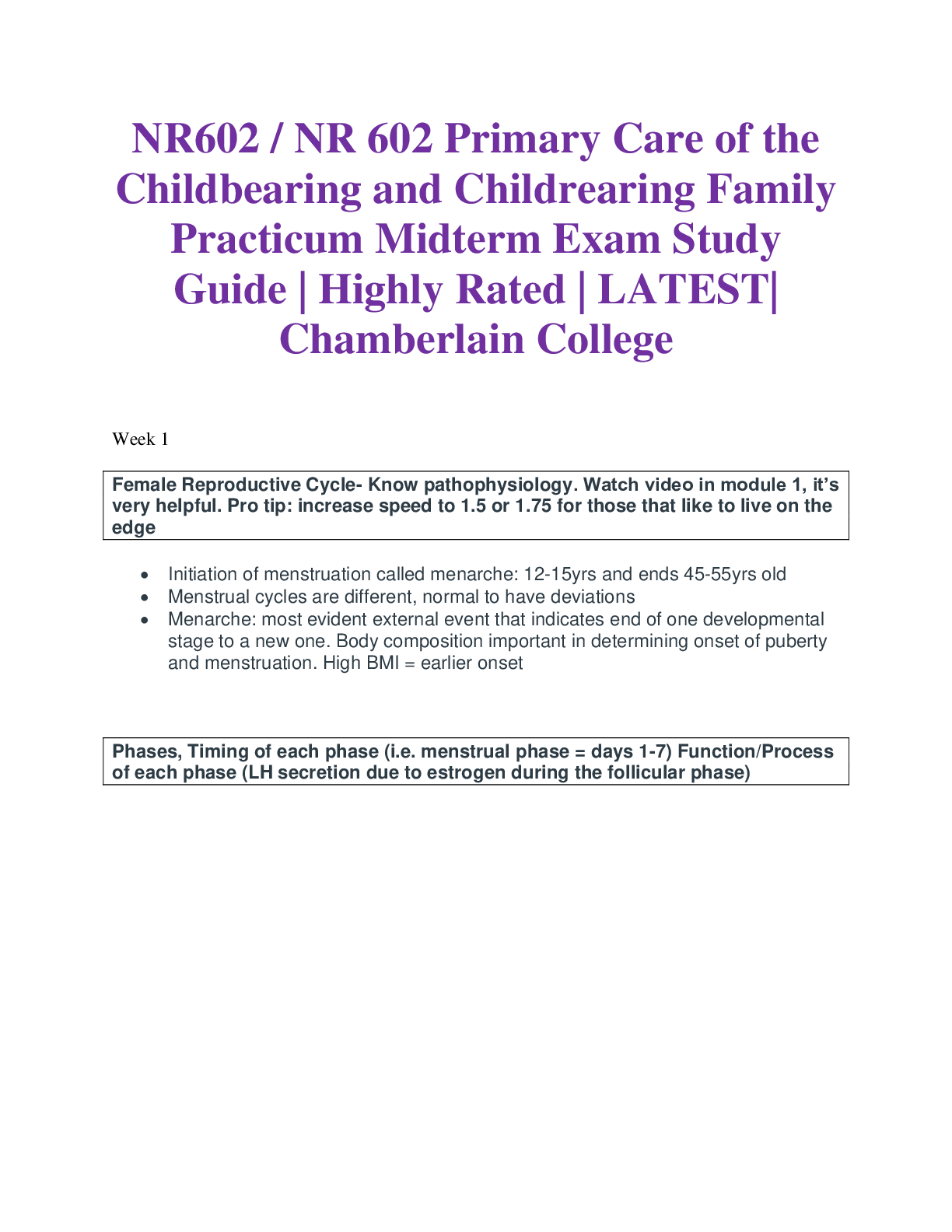
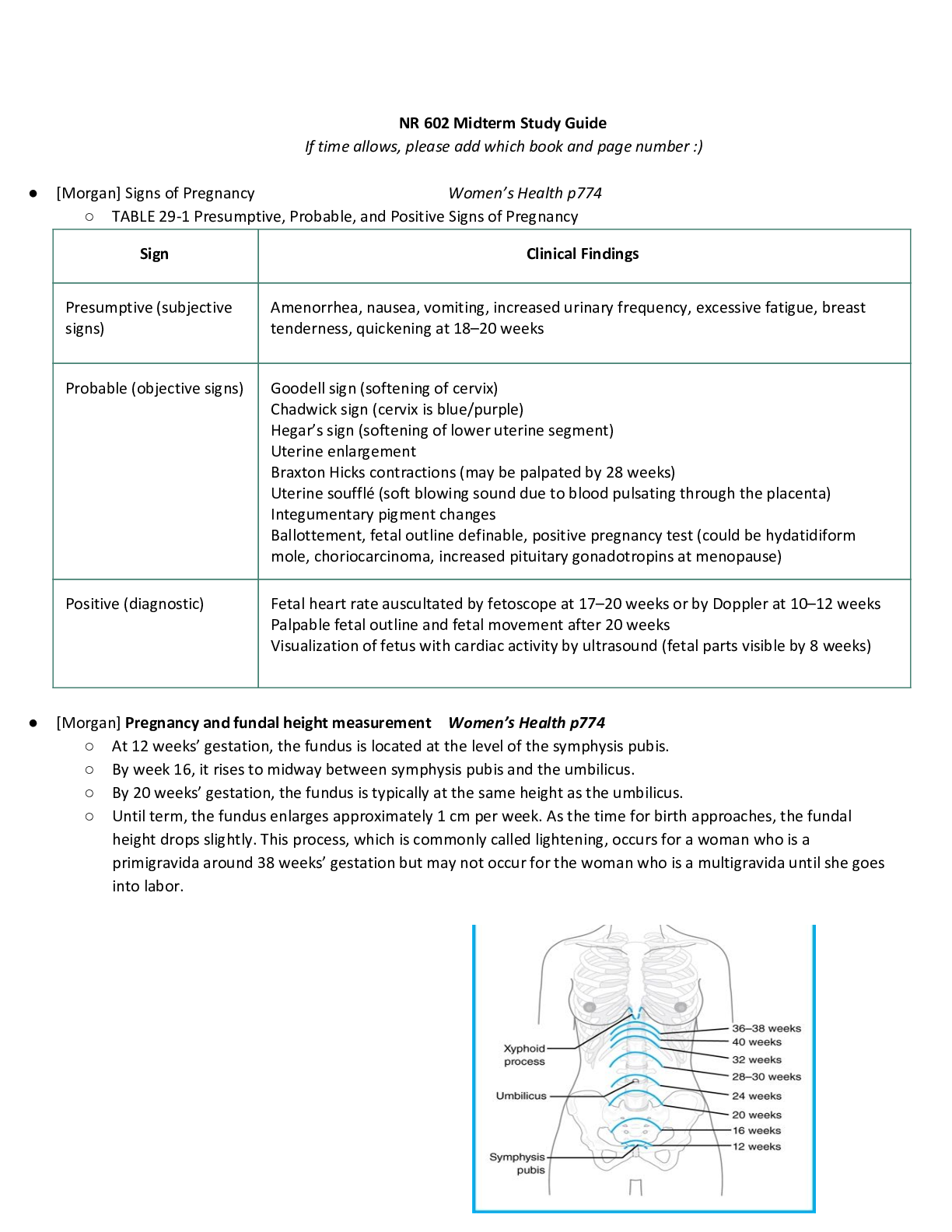


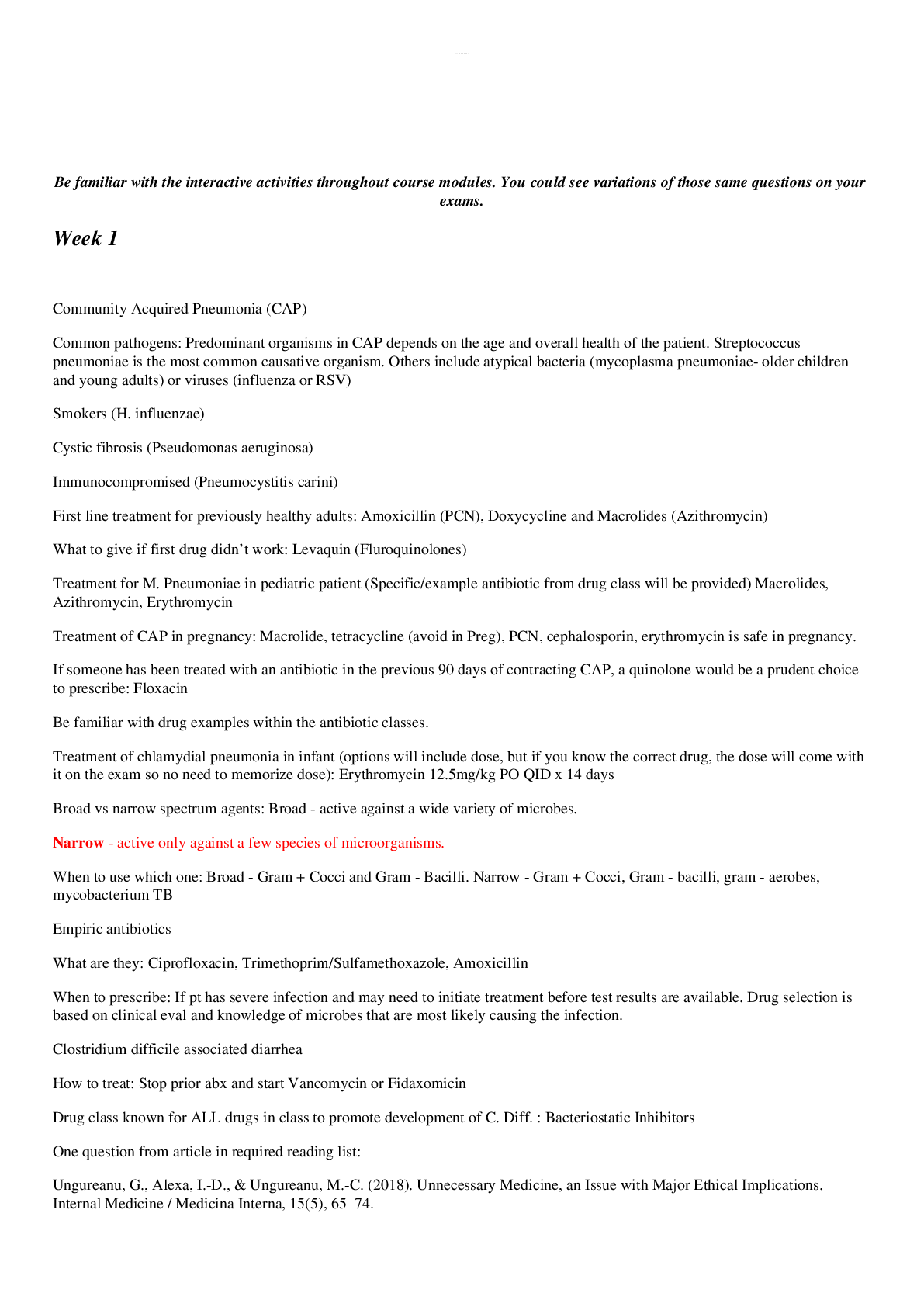

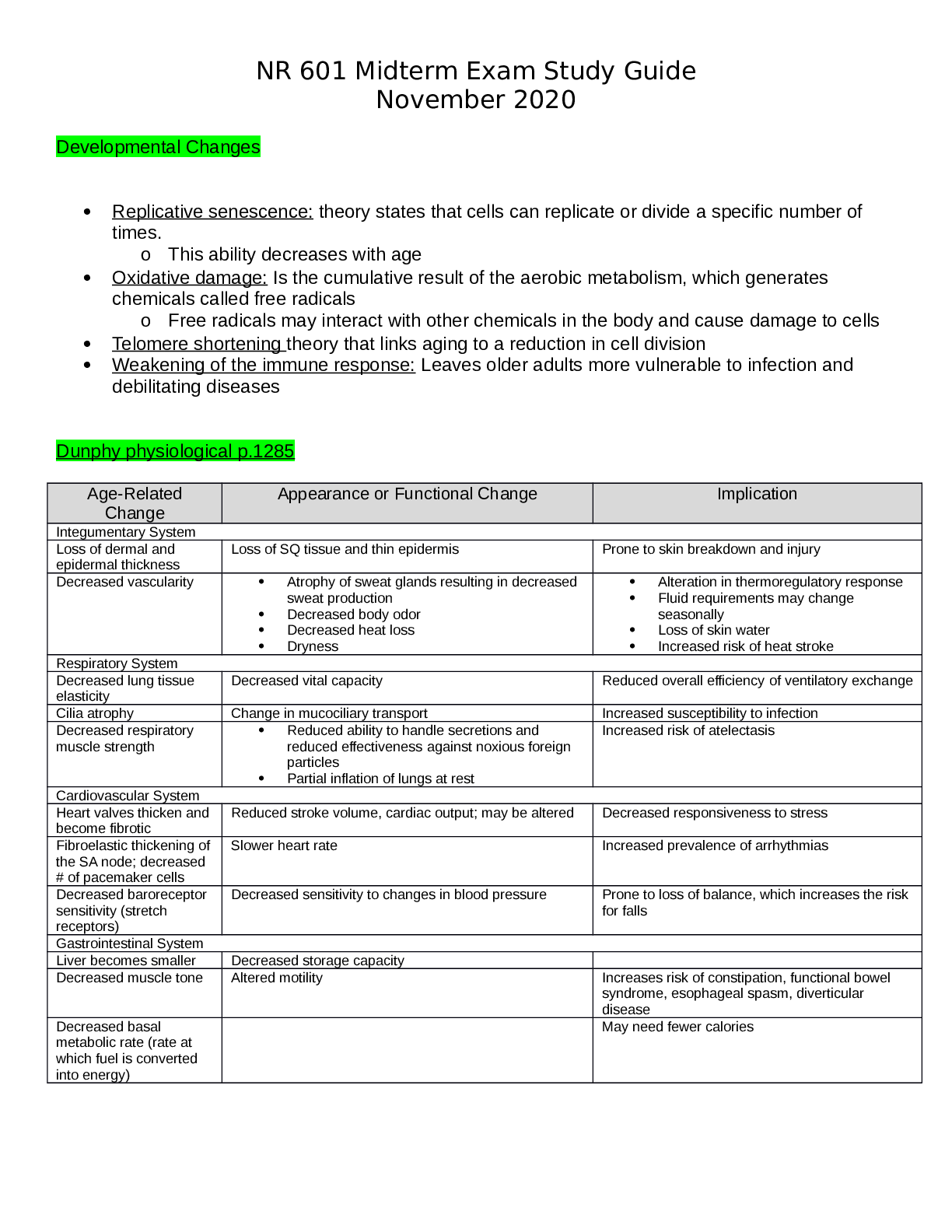
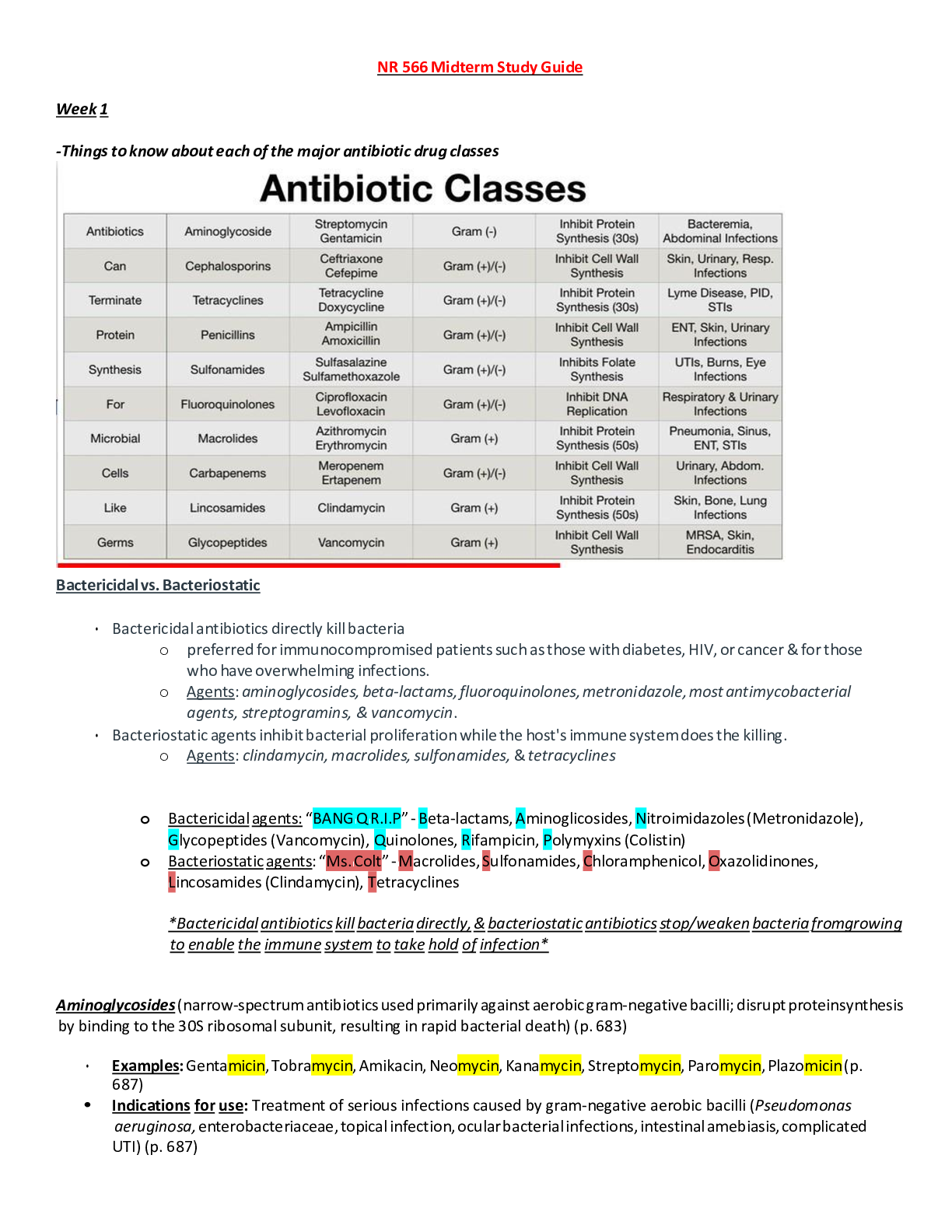
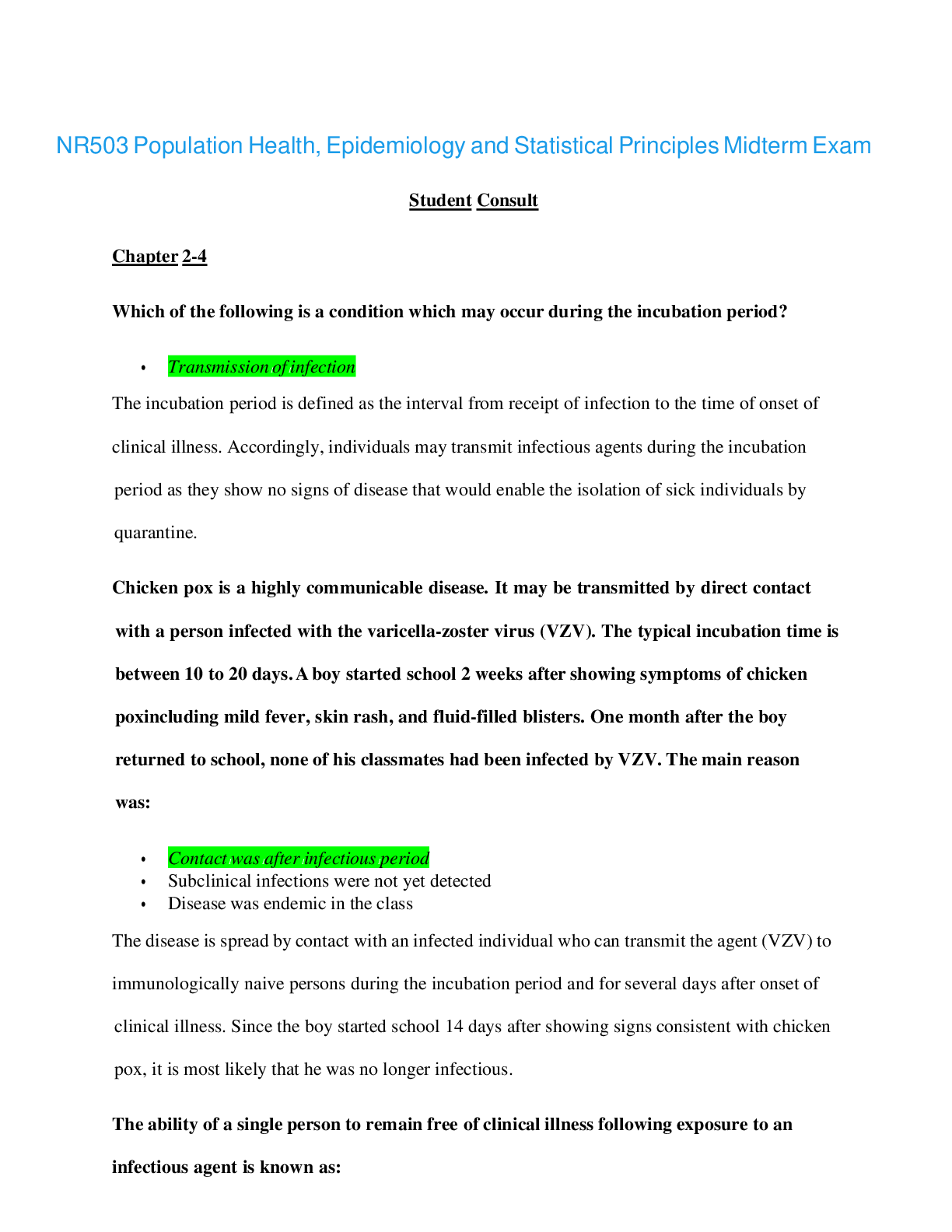
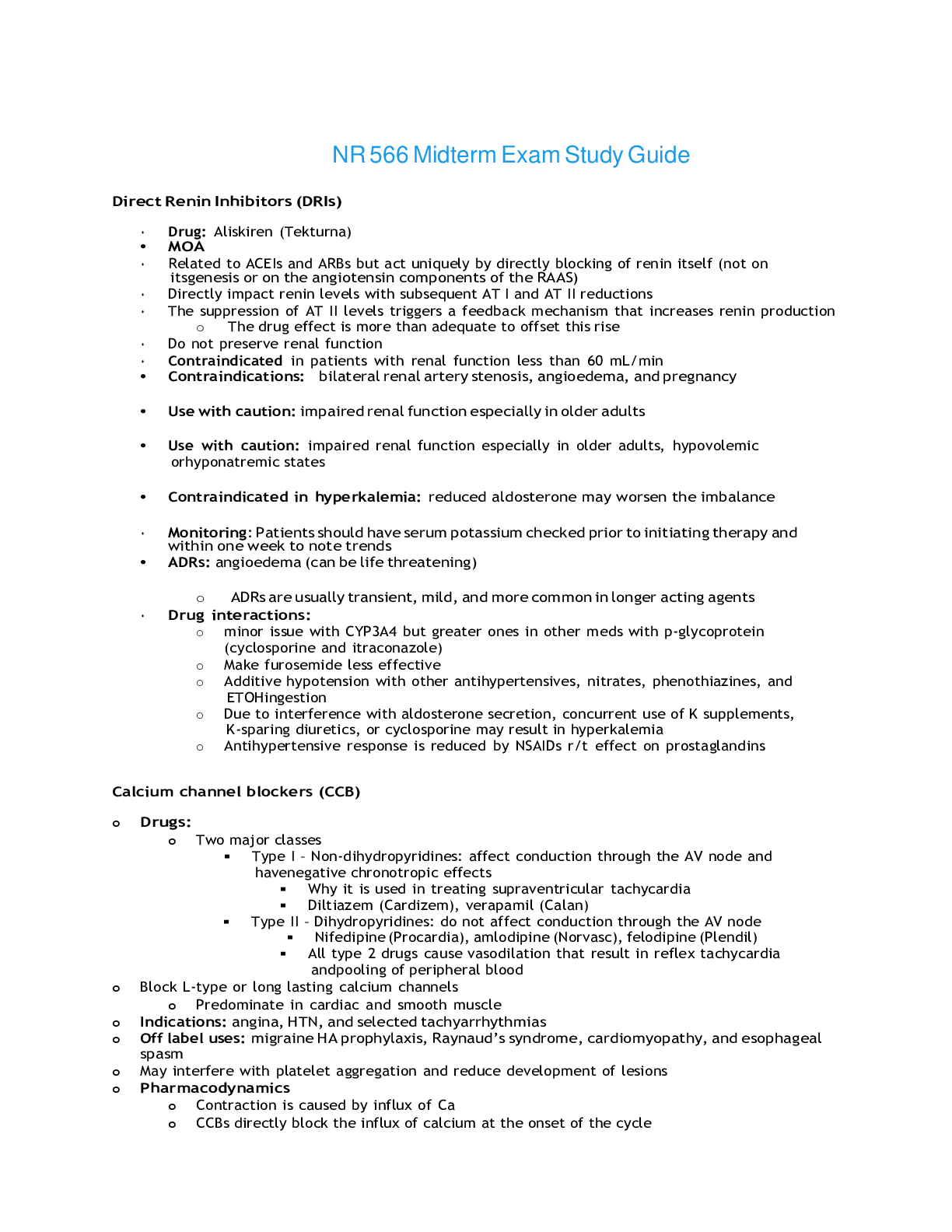


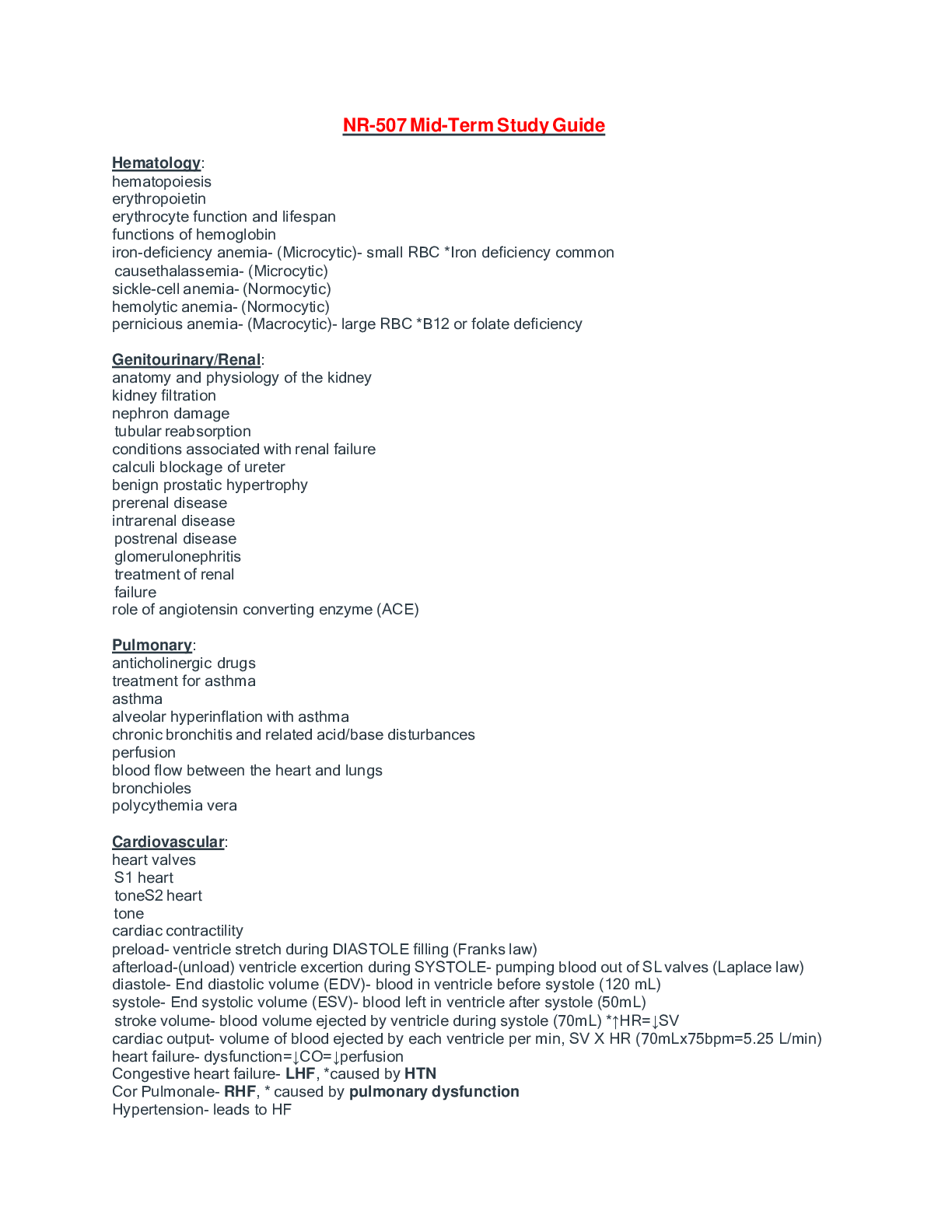
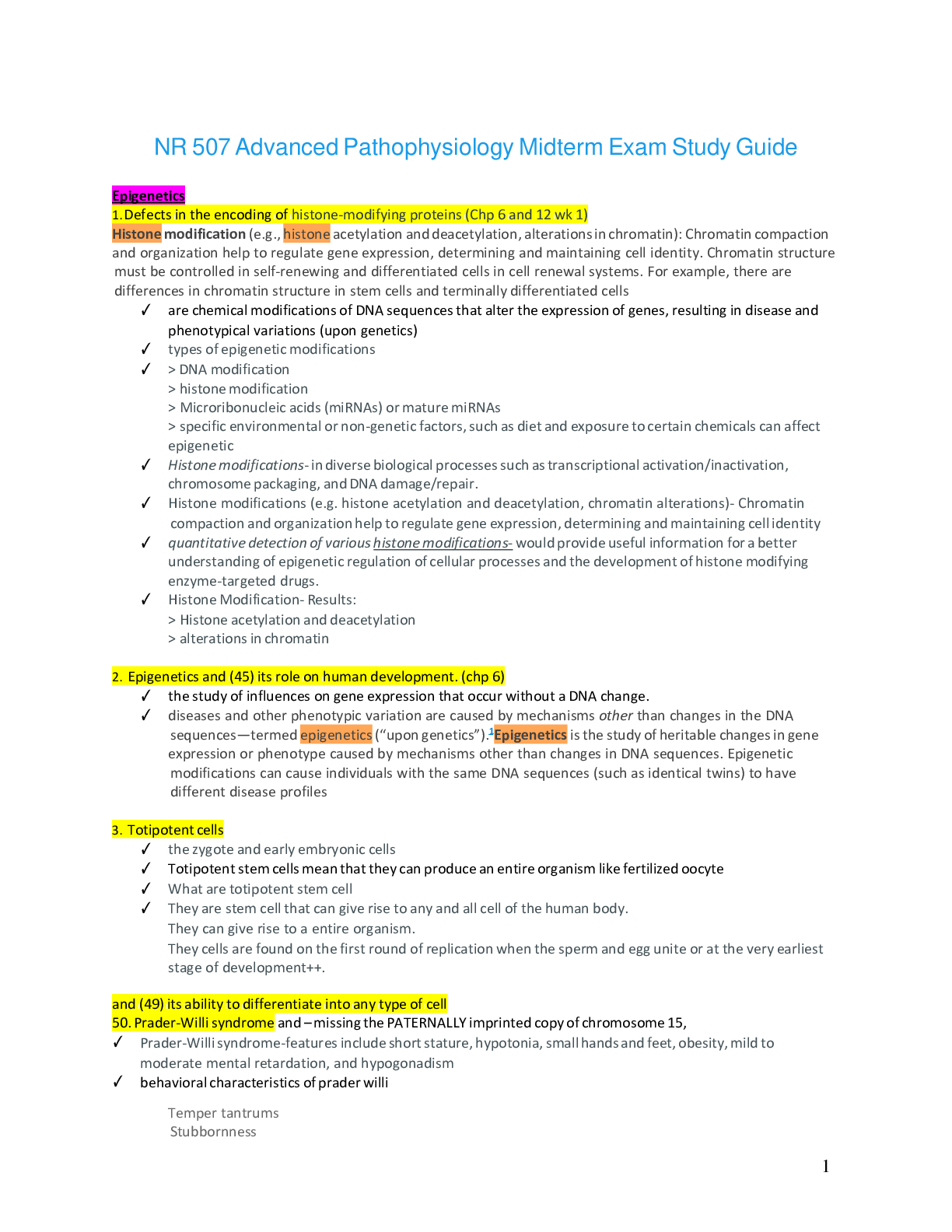
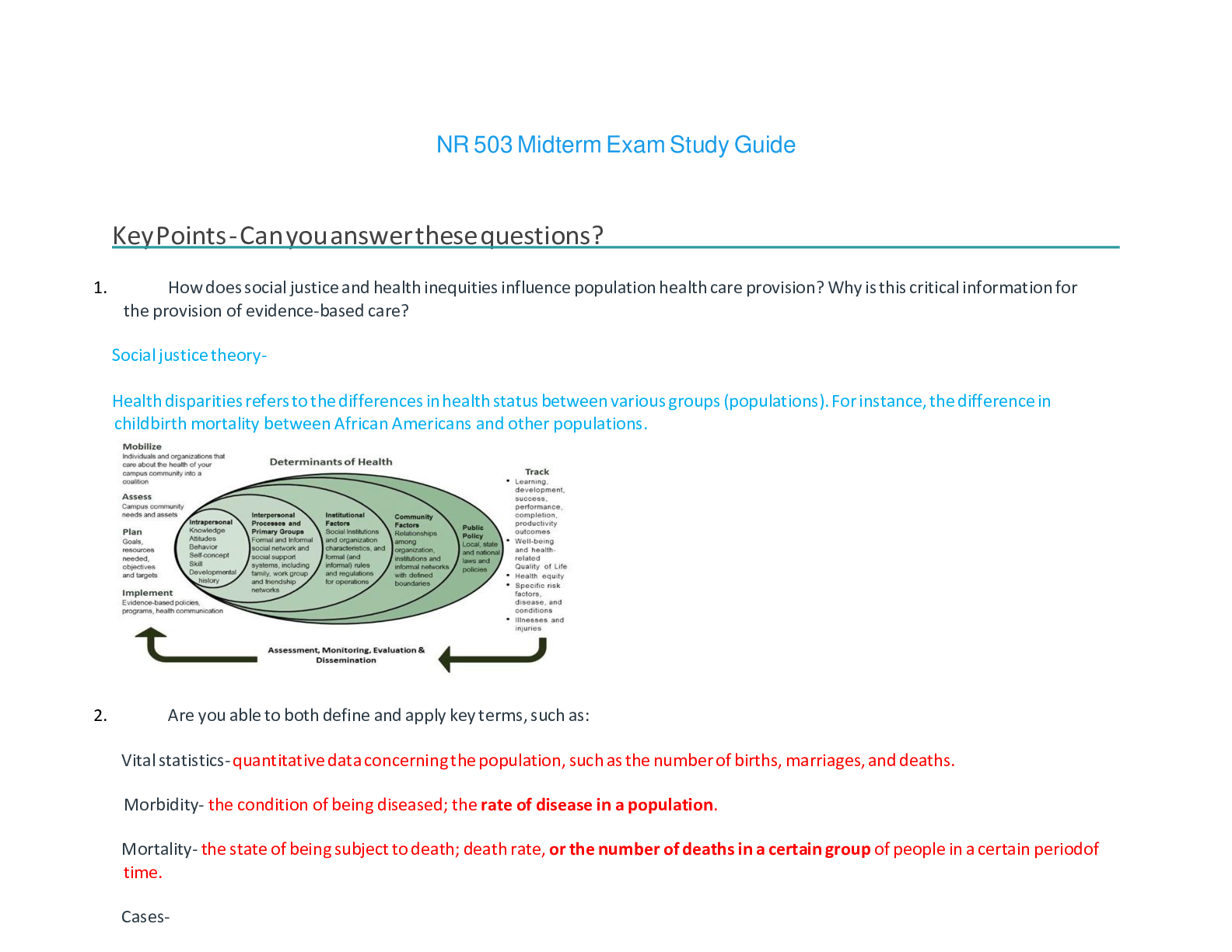
.png)


